Eclipse Natural Phenomena
Topic outline
-
Student and teacher observers wanted!
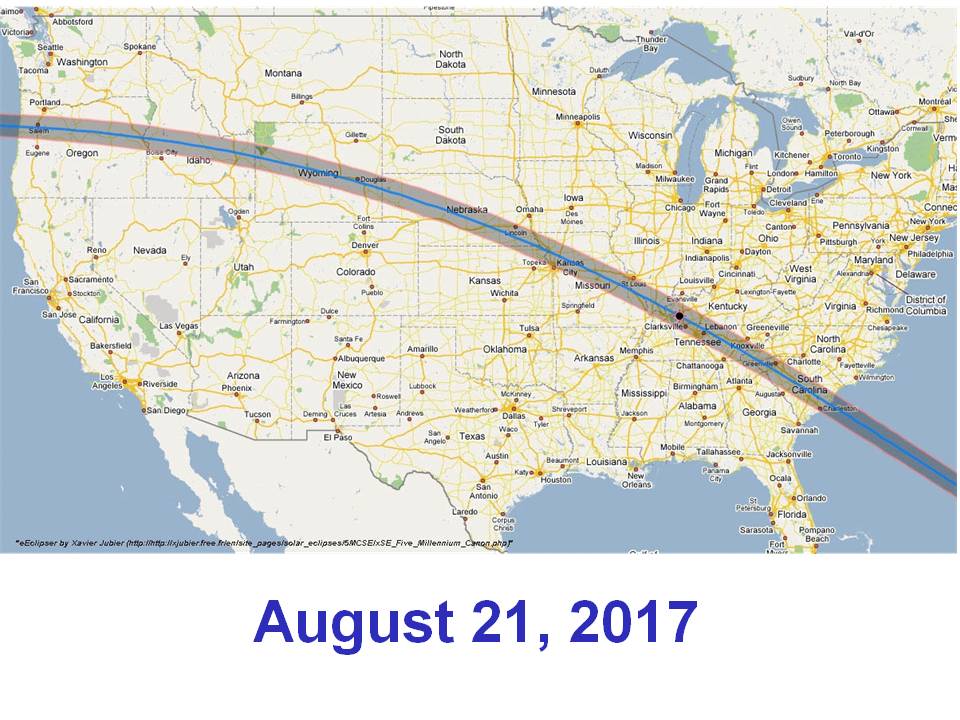
The upcoming Great American Eclipse of 8/21/17 is generating lots of excitement across the country, and lesson plans abound discussing how eclipses are formed and how they can be safely observed leading up to the main event; the awe-inspiring total eclipse, when the disk of the sun is covered by the new moon and the ghostly tendrils of the sun's atmosphere are visible to the naked eye and the stars and planets become visible in midday. Besides those approximately two minutes, what other interesting things might happen? What observations can you make during the hour before and after totality and can your sharing of these results lead to new understandings in science and make your eclipse viewing day even more memorable? Total eclipses are rare, the path of totality is narrow, and those crossing highly populated land masses have been scarce during the past few decades. In fact, the mean frequency of seeing a total solar eclipse at any given point on earth is once every 400 years, so it is well worth traveling to the path of totality to see the 8/21/17 eclipse if you are able. If you miss this eclipse, or if you miss observing some of the phenomena described here, the next three total eclipses crossing different parts of the USA will occur on 4/8/24, 8/23/44 and 8/12/45. Of course, if you're inspired to travel, as I and many other "umbraphiles" do, the next total eclipse will be centered near Pitcairn Island in the South Pacific finishing in southern Chile and Argentina on 7/2/19. The 12/14/20 eclipse crosses the S. Pacific and S. Atlantic and can also be viewed in Southern Chile and Argentina. On 12/4/21, you could even view the total eclipse in and near Antarctica! Since every eclipse and the phenomena surrounding it is different, it's always an adventure and a chance to learn more.
Diamond ring & Bailey's Beads, July 11, 2010 from a small catamaran 100 miles south of Tahiti, photographed by Lee Petersen with the author.
CAUTION: Never look at the partial phases of a solar eclipse with anything other than a device specifically approved for this purpose! Your eyes have no pain receptors, and significant damage can be done without your knowledge. During the total eclipse, from the time the sun looks like the photo above until it happens again at the end of totality, you should look at the sun without eye protection of any kind.
-
Forum
-
View Receive a grade
On August 21, 2017, there is an eclipse crossing the USA. What are some of the things you think will happen?
-
-
About 15 minutes before totality, as more of the sun's bright face is obscured by the disk of the moon, the sun becomes more like a point source of light. A "point source" can be considered to have negligible dimensions.
Astronomers measure angles smaller than 1 degree in arcminutes, or “minutes of arc”. There are 60 arcminutes in one degree, so 1 arcminute is 1/60 degree. If you hold your arm out to its full extent and look at the amount of space taken up by your pinky finger, that is about 30 arcminutes. All of the stars are considered point sources of light when they are viewed from Earth. The Moon is about 30′ (thirty arcminutes) across and so is the Sun, which leads to the beautiful total eclipse you are about to see. Once about 80% of that disc is covered, you will begin to notice the change in the quality of the light around you, and that strangeness will increase as totality draws near.
Photographers often use point light sources when they want shadows in their pictures with sharp edges on them (that is, without penumbras), and multiple or extended sources to make the shadow edges "fuzzier" or "to fill in the shadows with light". The sun is a very large source of light and it does not normally cast sharp shadows because of its apparent size. However, when the moon's disk covers a large percentage of the sun's bright face, it becomes more and more like a point source, casting increasingly sharp shadows.
Here is a photo showing shadows of individual hairs on my friend's head just after his 15th successful eclipse viewing.
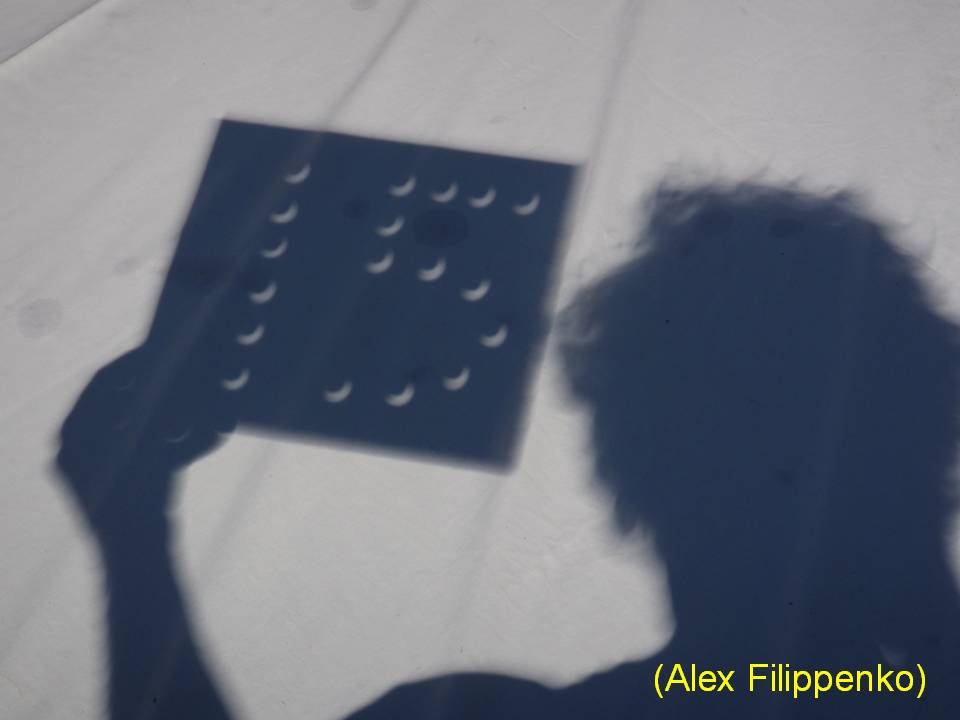
Have fun with it! Try standing (maybe holding a fuzzy creature) in front of a white wall or a large white sheet laying on the ground during the last 15 minutes before and after totality, note the time before totality, watch how the shadows grow sharper and sharper, take photos of those sharp shadows, and post them here later.
-
Lightbox Gallery
-
-
The Umbra is the darkest part of the Moon’s shadow. Within the umbra, the Moon appears larger than the Sun. An observer standing in the umbra sees a total solar eclipse.
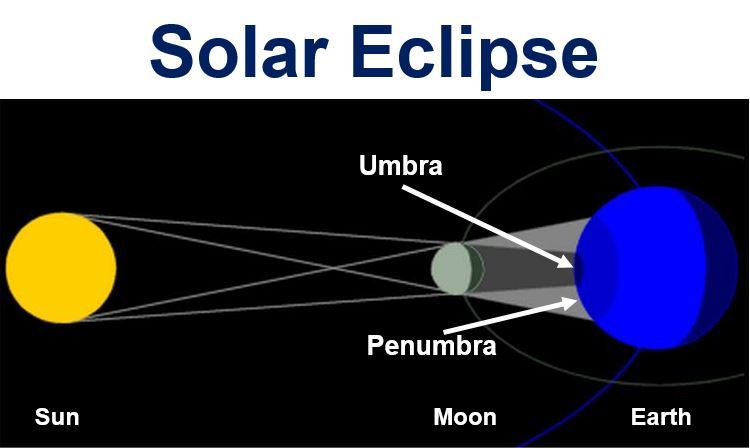
During a total lunar eclipse, which generally lasts for one or two hours, the Moon's face darkens as it passes through the umbra. The reddish glow of the Moon's face at this time is caused by the filtering out of blue wavelengths as the remaining sunlight (portions of the penumbra) passes through the Earth's atmosphere, leaving only the longer wavelengths at the red end of the spectrum. The border between the penumbra, which the moon passes through first, and the umbra, looks like a sharp edge on a nearly fully illuminated moon, and most people do not notice when the moon passes into the penumbra. This gives you a visual idea of how much darker the umbra is than the penumbra. You are under the penumbra of the solar eclipse as soon as the moon's disk makes first contact with the limb on the sun, but you probably won't start to notice this partial shadow until just before the total eclipse begins.
Sometimes, during a total solar eclipse, this strange shadow of darkness can be seen centered on the eclipsed sun and stretching off to the distant horizon. Called a shadow cone, it is visible because the Earth's atmosphere is not completely transparent, scattering sunlight and hence appearing blue during the day. Shadow cones are particularly dramatic for eclipses near the horizon, as geometry creates a long corridor of sun-blocked air. In the website below is a shadow cone photographed during a Total solar eclipse on 12/4/02 from South Australia. The eclipsed Sun itself still appears bright because of light from the surrounding corona.
https://apod.nasa.gov/apod/ap030106.html
In the photo below is a picture of a shadow cone during a 3 minute 3 second eclipse within one degree of the equator at approximately 10 AM local time on 3/9/16 taken by friends aboard a ship in the Molucca Sea south of Bitung, Sulawesi. The sun is at 44 degrees high in the sky, so the cone is not as pronounced as it is in the website above, but is still clearly visible.
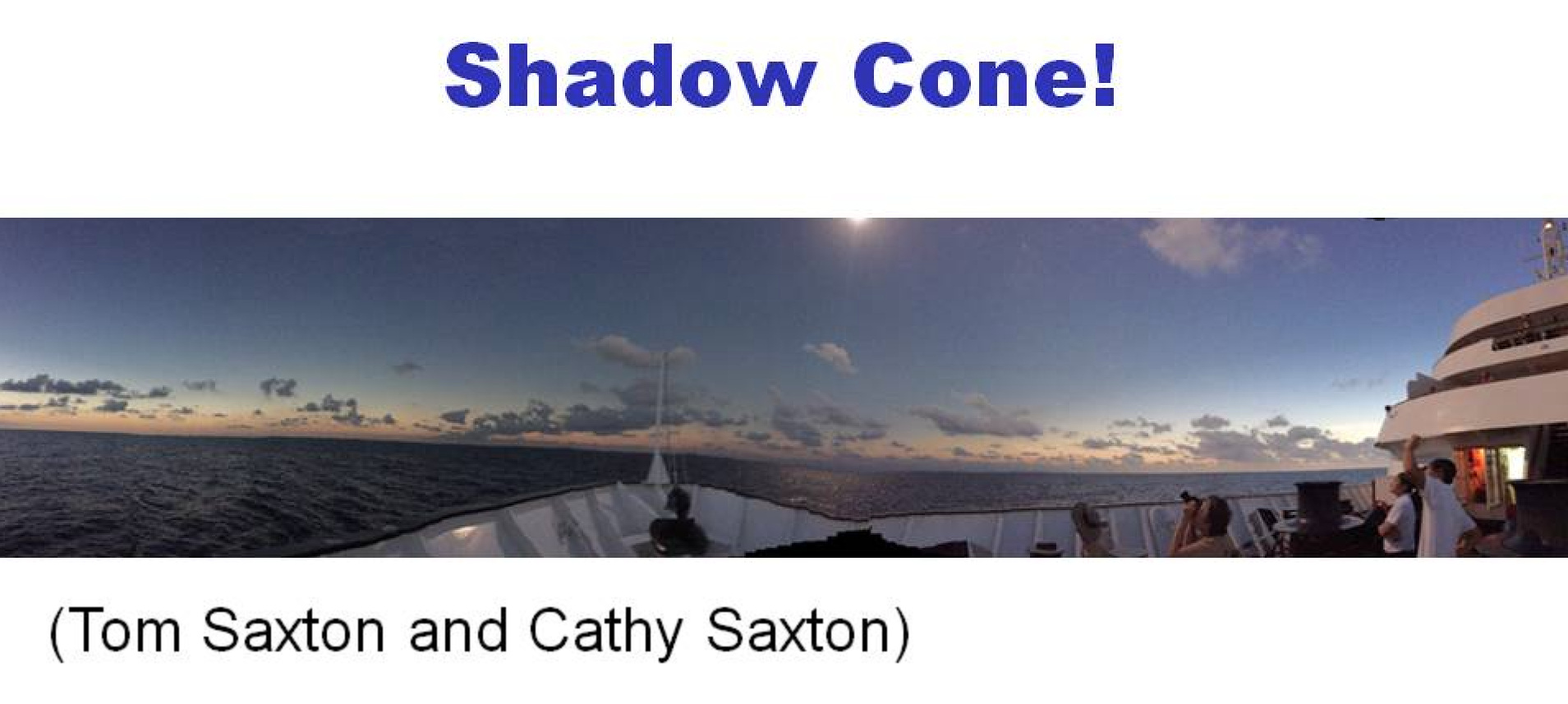
On rare occasions, the umbra, or edge of the shadow cone, can be seen racing toward you in the few seconds before totality. I have seen this once in my eight observations of total solar eclipses, and to me it looked like the black wall of Mordor (Mordor was the Land of Shadow in The Ring Trilogy), rushing toward me from the West at about 1000 miles per hour, or a quarter mile per second. This was a noontime eclipse on the Black Sea in 1999, with clear weather and high humidity. You can estimate the speed with which the umbra will race toward you on eclipse day, and attempt to see it by looking West in the few seconds before you can safely look toward the sun with your naked eyes. The speed of the shadow can be calculated as the difference between the speed of the earth's rotation and the moon's apparent speed of revolution around the earth. At the equator, this is about 1706 km/h (about 1060 mph); near the poles, where the speed of rotation is virtually zero, it is about 3380 km/h (about 2100 mph). What do you estimate the speed will be at your latitude?
A particularly good animation of the umbra and penumbra's shadows crossing the USA for the 8/21/17 eclipse can be found here: https://svs.gsfc.nasa.gov/cgi-bin/details.cgi?aid=4314
This is a good phenomena to watch for even if you have a cloudy eclipse day. Here are photos from Cornwall, England during the 1999 eclipse:
http://www.openviews.org.uk/eclipse.htm#images
The Elusive and Somewhat Mysterious Shadow Bands:
A second type of moving shadow that can sometimes be observed locally immediately before and immediately after a total solar eclipse are shadow bands. They have nothing to do with the umbra itself, but instead appear to be an atmospheric effect that may be related to wind speed in the upper atmosphere and the tiny slit of light from the sun that is left a few seconds before or after an eclipse. Here's a photo of the narrowness of the slit just before the diamond ring appears.
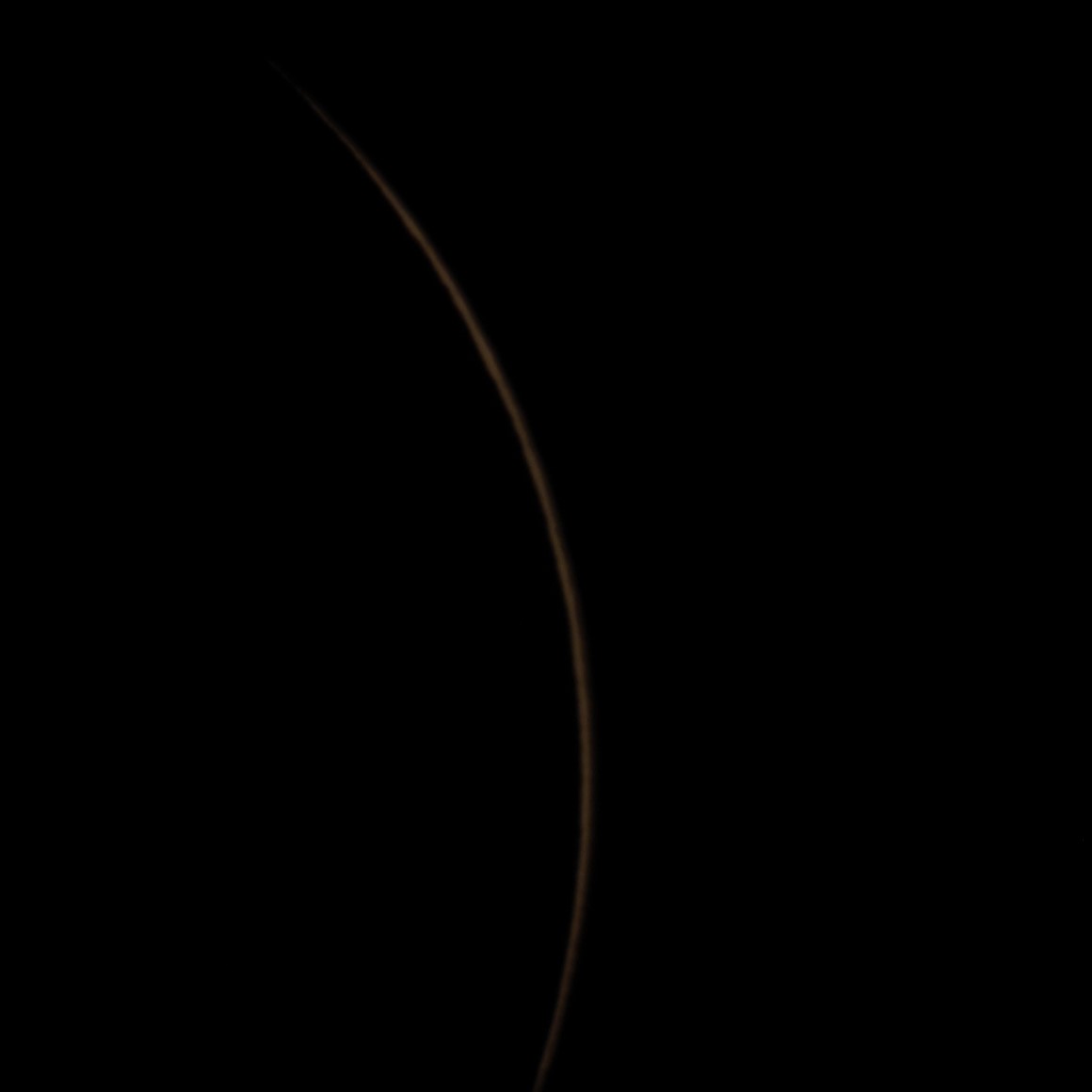
Since this is the same time you'll want to be looking opposite the direction of the sun to try to observe the onrushing shadow cone, then turn around immediately to see the diamond ring, Bailey's Beads, and the total eclipse, a little preparation to record the shadow bands is my strong recommendation. Set up a video camera to observe the white sheet or wall that you've been using to view the partial phases of the sun. Turn this video camera on about 1 minute before totality is due to arrive at your location and shut it off about 1 minute after totality is complete. See if you see the shadow bands on the replay: you can try playing it back at slow or fast speed to help you spot extremely fast or slow moving shadow bands.
Here is a great website describing and showing recordings of shadow bands and describing their scientific observation in detail:
http://www.strickling.net/shadowbands.htm
NASA has described the shadow bands and the need and methods for collecting scientifically useful data from numerous citizen scientists very well at this website, so if you get nice photos or movies and observation data, please share them with NASA as well as with the EIS Academy:
https://eclipse2017.nasa.gov/exploring-shadow-bands
To record both observations regarding the umbra and the shadow bands, you should measure the relative and absolute humidity of the air at the time you observed, or tried to observe, these phenomena. A good reference for measuring humidity can be found here:
http://www.wikihow.com/Measure-Humidity
and a decent hygrometer can be purchased for less than $10, or, you can listen to a very local weather broadcast. Also, you should note the altitude of your viewing location, the height above the ground, the temperature, the cloudiness, the wind speed and direction, and anything else you feel might be relevant to the science of whether these phenomena are likely to be observed during any given eclipse. If you have scattered high clouds, take a photo of these clouds and include it as an indirect way to measure wind speed and direction in the upper atmosphere. If you can, estimate the elevation of these clouds.
-
There are many ways to enjoy getting ready for the eclipse and viewing the partial phases before and after totality.
Here are a few ideas. Please send us yours to add to our journal.
Make an eclipse viewing box and/or cardboard viewer:
If you have access to eclipse viewing mylar or welder's glass, you can make your own eclipse viewing box or decorated cardboard. Putting a box over your head or using a large piece of cardboard to observe also ensures you won't get a sunburn while looking up toward the partially eclipsed sun! You can decorate the box or cardboard and/or poke holes in it to focus the partial phases of the eclipse onto a white surface. Here are some examples:

I always make holes in a large piece of cardboard or plywood for projecting images of the partial eclipse phases onto a white sheet or white wall. The size of the hole should be 1/100 or less of the distance between it and the projected image. The thinner the sign compared to the size of the holes and the rounder the holes, the more focused and consistent your images will be. I like to show where and when I was during the eclipse; here are a few examples:
Bhutan 2009 and Coyhaique (Chile) 2017 annular eclipse, signs and projections of partial phase.
South Pacific on the Millennium cruise ship between Fiji and New Zealand. Holes are drilled in the large plywood sign.
Focus the crescents from your location and date on a sheet or white wall and photograph the result:
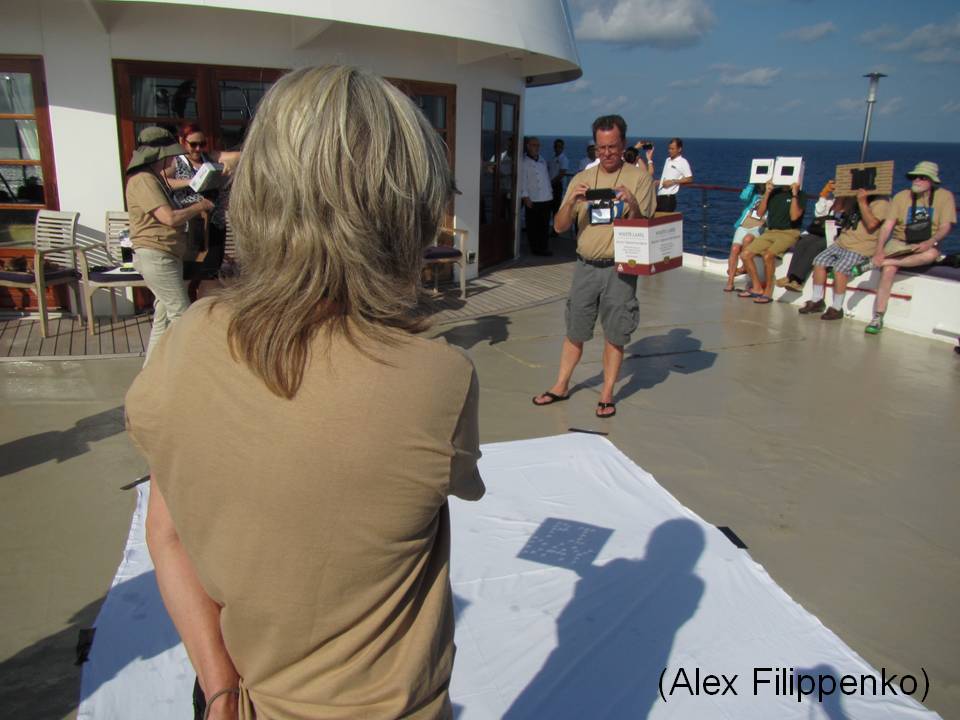
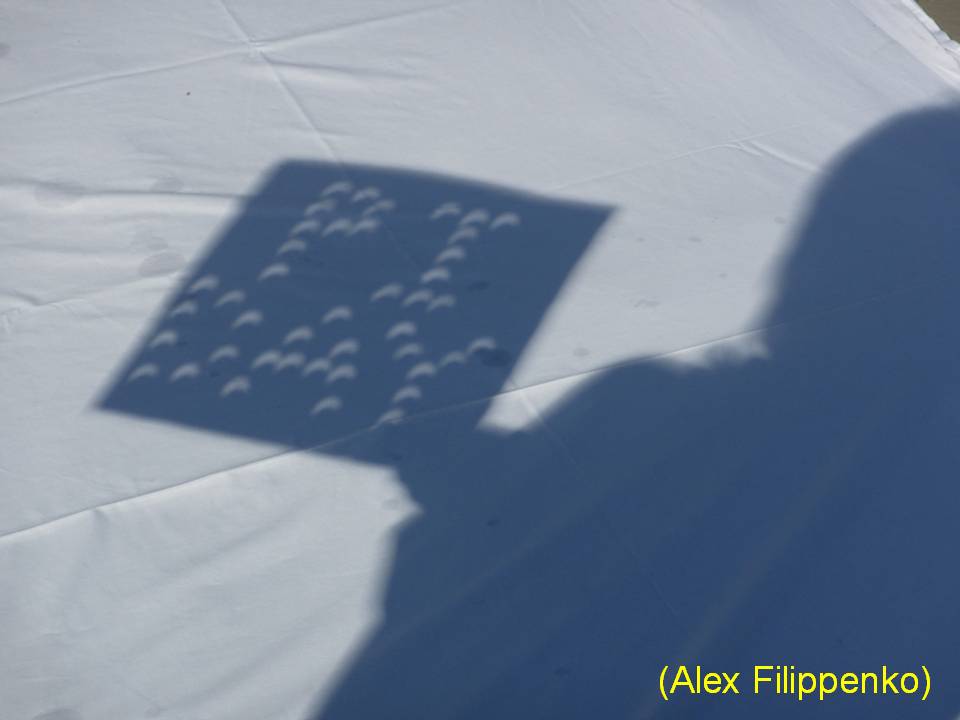
Pi Day (3.14) sign focused on white sheet showing partial phase of eclipse.
You can also make art with your pattern of holes in cardboard that is relevant to you and project that onto a sheet or white wall:
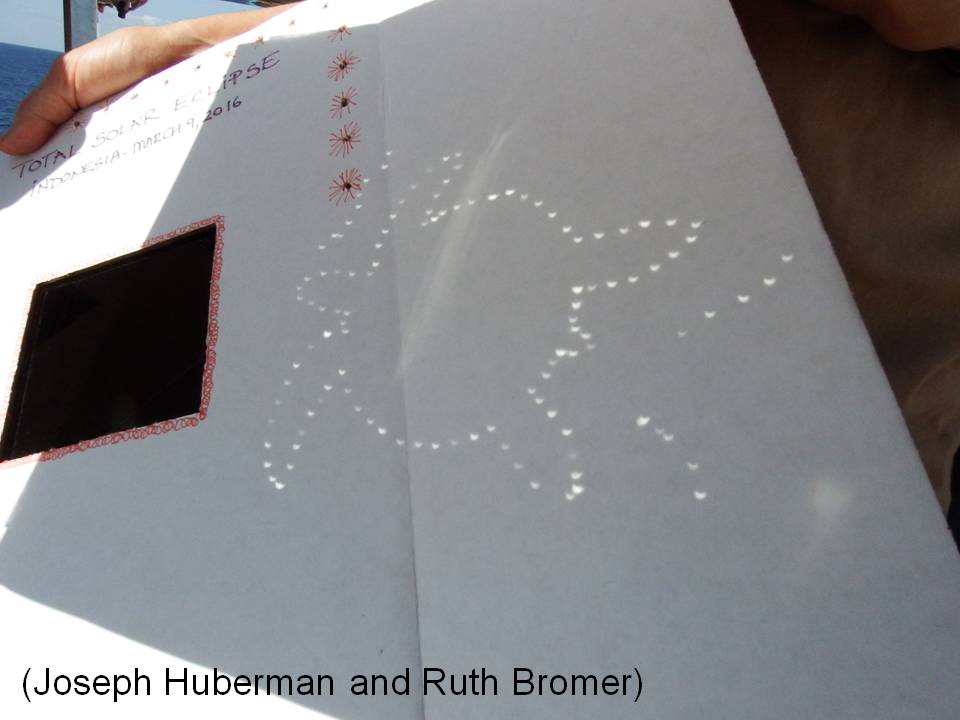
Flower and turtle projections.
How big do the holes have to be and how far away from the white surface do you have to hold the sign in order to focus the crescents? The bigger the holes the further away: Take a look at this website describing how to make a pinhole camera--it is the same idea in larger scale for your sign projectors.
http://www.wikihow.com/Make-a-Pinhole-Camera
Create an interesting solar projection using your own fingers:

In this rooster image on my friend's farm in Coyhaique, Chile, during the annular eclipse in February of 2017, in addition to the intentionally created crescent in rooster's eye, notice the crescents between my fingers, between my hair and collar, and even the partial crescents in the folds along my sleeve. Sometimes, an image will surprise you!
You can notice and photograph the crescents through gaps in natural or man-made objects:
...like lavender flower stalks
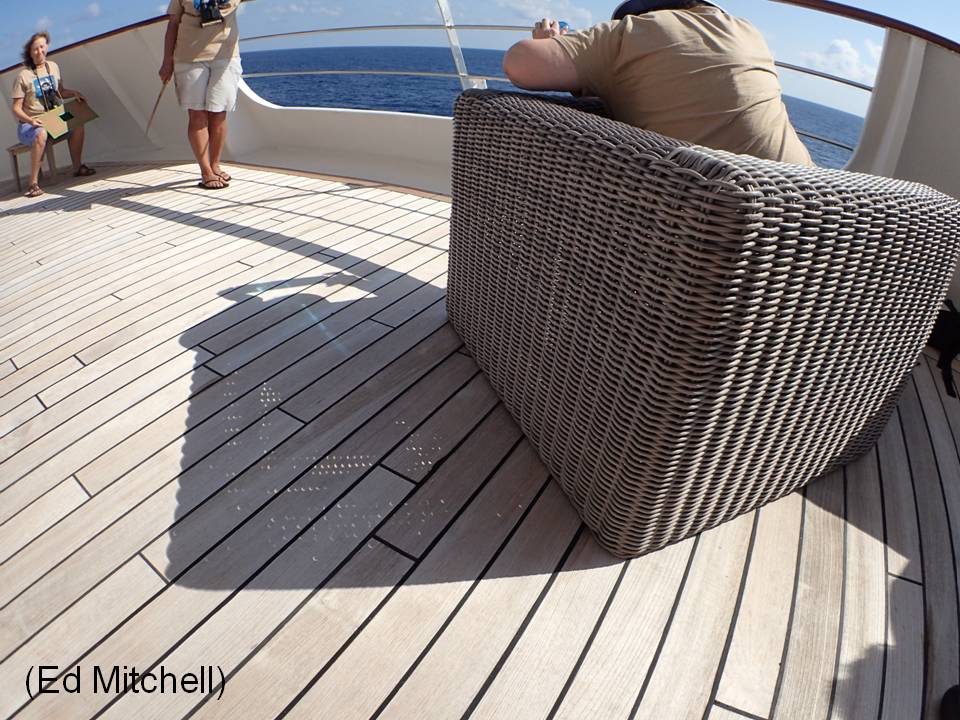
..or a rattan chair on a deck (closeup below)
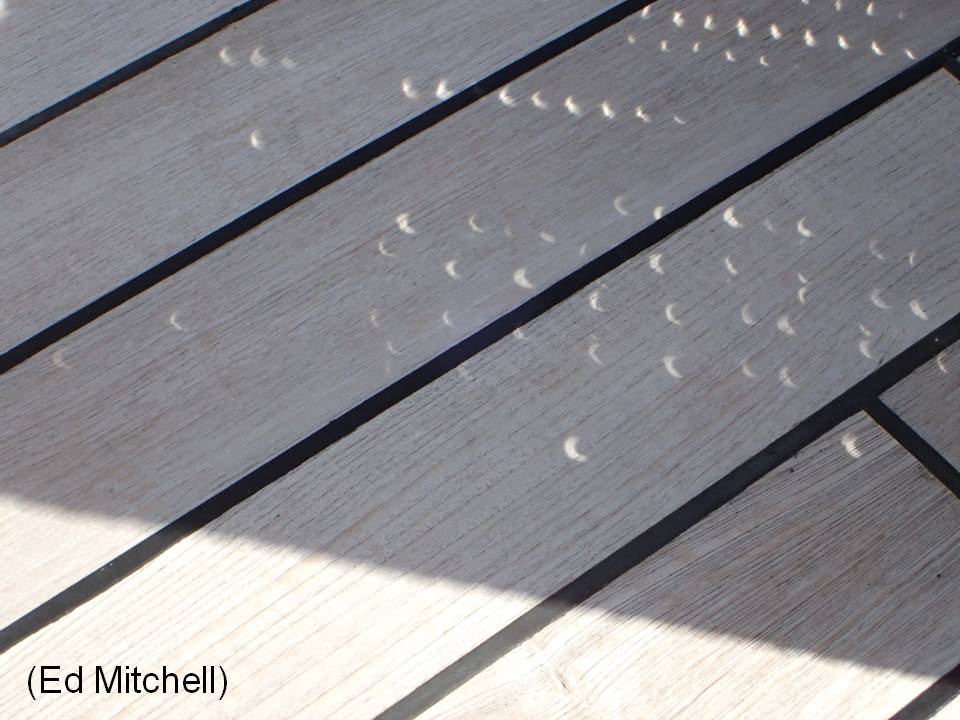
Or, create or wear the art yourself:
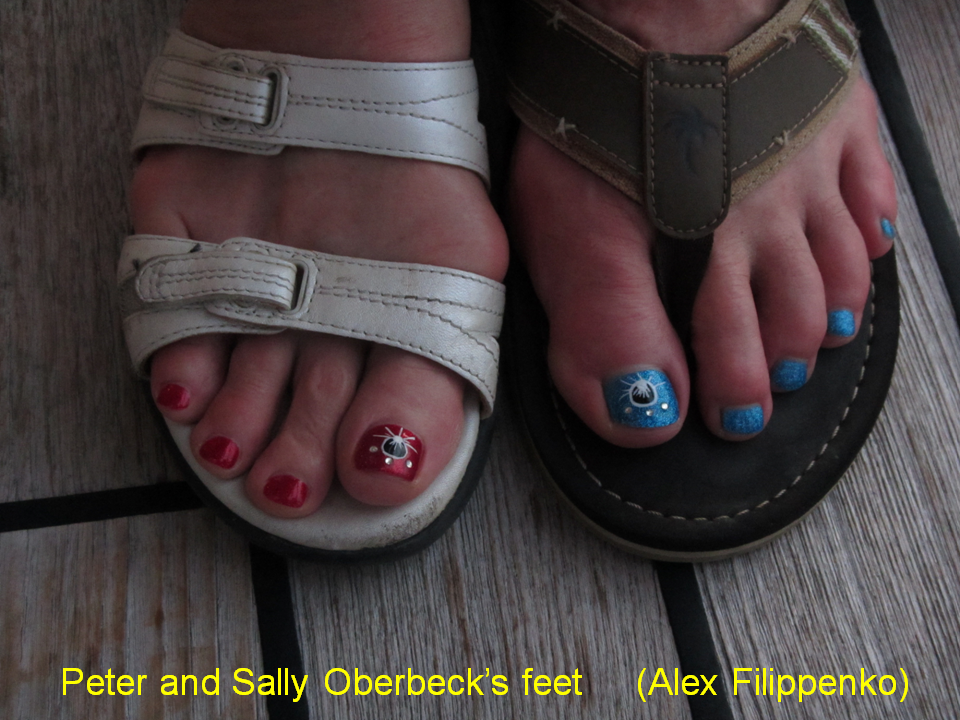
Toenails painted with eclipses & diamonds representing diamond rings and stars or planets visible during totality.
What creative images will you design? Please journal your artwork below, and note size of holes versus distance to focus the solar crescents.
For those of you who are great photographers and photo-doctors, here are a few artful images to spur your imagination:
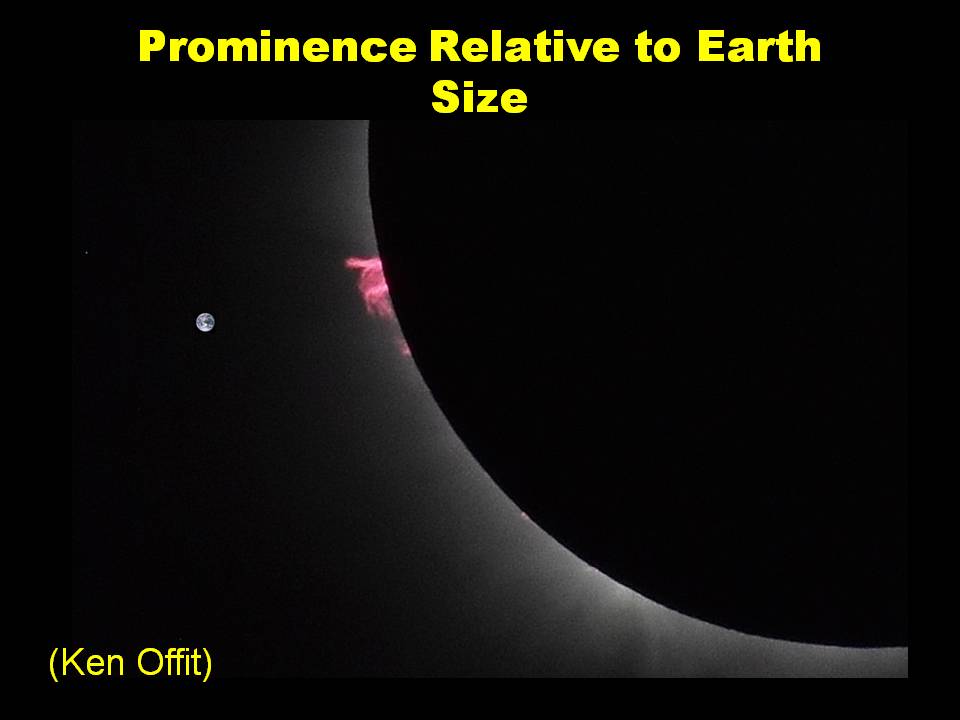
The earth is photo-shopped onto the telescopic image of a prominence observed through a telescope during the March 2016 eclipse at correct relative size.
And, keep in mind that if you decide to take images from multiple eclipses, you can make art like this:
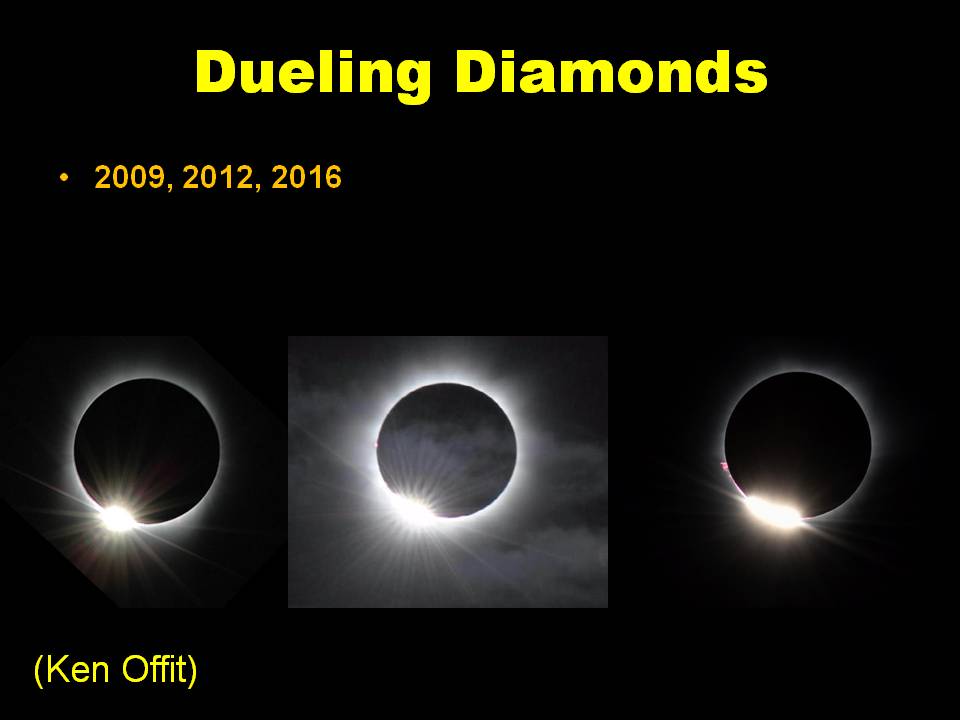
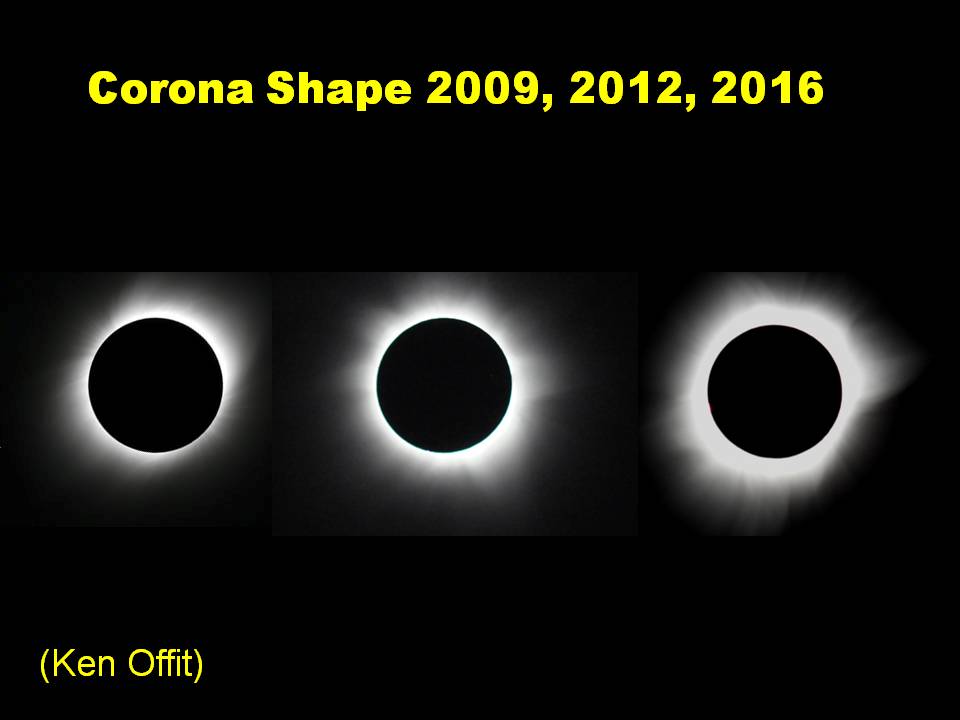
The evening after the eclipse (August 22), or the evening after that one (August 23), see who can be first to spot and photograph the new moon waxing into the thinnest of crescents just before sunset:
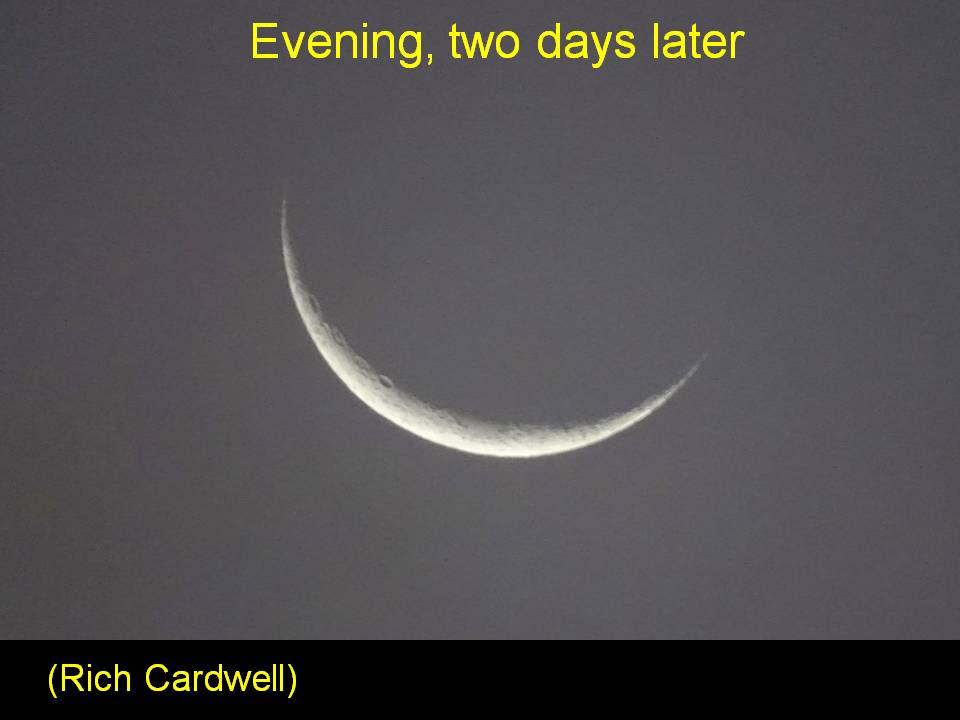
The record sighting of the crescent after a new moon that I'm aware of was 17 hours after the eclipse. Can you break the record?
-
Human Behavior during the total eclipse:
During the eight eclipses I've observed, I've seen people laugh, cry, scream, jump up and down, or call out the name of god during totality. Very few stare silently. Many say the experience seems to last only a few seconds, when in fact totality lasts from two to six minutes.
What do you think your reaction will be? Your friends and family's reactions? We'd love to get your thoughts both before and after you actually experience your first total eclipse.
Thinking about the other living things that you might be near during the total eclipse, predict what their behavior will be based on which of these classifications each type of animal or bird falls into.
Animal behavior related to activity level during day, night and twilight hours:
Although some pets have learned behavior to fit in with their human families, most pets and wild animals naturally exhibit behavior related to light levels that is either diurnal, crepuscular (or its special cases of matutinal or vespertine), or nocturnal.
How Dark will it get during the eclipse?Diurnal by definition means of or during the day. Animals that are diurnal are active during the day; humans are naturally diurnal. Have you ever noticed how you're much more tired when you must wake up before sunrise and how you get more tired the later you stay up past dark? By contrast, if you go near the polar regions during local summer when it is light very late, many people don't feel tired or even have trouble sleeping at all. In the wild, diurnal animals have the advantage of direct sun exposure and vitamin D3 synthesis, and very good visibility. Animals that mainly rely on vision to hunt for food are usually diurnal. Diurnal prey have the advantage of easily spotting predators from a distance. Diurnal animals predominantly have colored and vivid vision. Some farm animals that are naturally diurnal may come home to roost or to the barn.
Nocturnal means done or active during the night. Nocturnal animals are usually more vulnerable to predation, so keeping active only during the night makes them somewhat "invisible", like mice. Nocturnal predators usually have a sensitive sight and/or do not rely on visible light to see, perhaps having infrared vision to spot body heat. They can also have very well developed senses of smell and hearing. If you happen to have sleeping pet mice with you during the eclipse, do they wake up, or doesn't it get dark enough for them to wake up?
Crepuscular means of twilight. Crepuscular animals are active during twilight. Twilight is the illumination of the earth's lower atmosphere when the sun itself is not directly visible, between sunset and dusk and between dawn and sunrise. Usually Crepuscular predators are active during twilight because their prey is active during that time, and they still have a decent amount of light to hunt and forage. On the other hand, crepuscular prey, like rabbits and guinea pigs, can use this light to easily spot and avoid predators. If there are fireflies in your area in August, try capturing a few and see if they begin to emit their bioluminescent light.
Matutinal is a special case of being Crepuscular and means of or occurring in the morning. Matutinal organisms wake up before diurnal organisms so they have the advantage of consuming resources without competition. Many species of bees are matutinal organisms and some flowers, like Morning Glorys have evolved along with bees to open and make their pollen available to the early morning bees for pollination. Set up a video camera on a tripod at a bee hive if you can, and observe their behavior before, during and after the eclipse.
Vespertine is a special case of being Crepuscular and means relating or occurring in the evening. Vespertine organisms are similar to Nocturnal organisms. Both are awake at similar times so some share very close relations, as some nocturnal species are active in the evening but continue throughout the night. Vespertine organisms, like bats and owls, are generally active before most Nocturnal organisms so they can consume some resources before competition from the latter. If you set up to watch the eclipse near a bat or owl habitat, do you see or hear them during the eclipse?
Blooming Plants:
Will plants that bloom at night have time to open or partially open their flowers during the eclipse, and will they close them again after the eclipse? Will plants that close their flowers at night have time to close or partially close them, and will they open them again after the eclipse? If you are near such a plant, you may want to set up a tripod with a camera on a flower or bud and run it for the few minutes before, during and after the eclipse to see if any changes occur.
This depends on a number of factors, including how close you are to the centerline of the eclipse, the atmospheric conditions above you and to the horizon, how high the sun appears in the sky, and your altitude. To give you an idea related to astronomical observations of the planet Venus, which you've probably seen as a morning or evening "star" just after sunset or just before sunrise, on Aug. 21, 2017, Venus should become visible about 10 minutes before totality. Venus will be shining at magnitude -4.0, and will be situated 34 degrees to the west of the sun in the south-southwest sky. Your clenched fist held at arm's length measures approximately 10 degrees, so you can find Venus, by far the brightest light in the sky, roughly "3.4 fists" to the west of the sun.
One of the most beautiful phenomena that occurs during the total eclipse is the 360 degree glow like a sunset, as you are able to see the sun shining in areas that are not experiencing a total eclipse, but are only experiencing a partial eclipse. The glow at the horizon in all directions shows that the area beneath the umbra is so much darker than the areas under the penumbra.
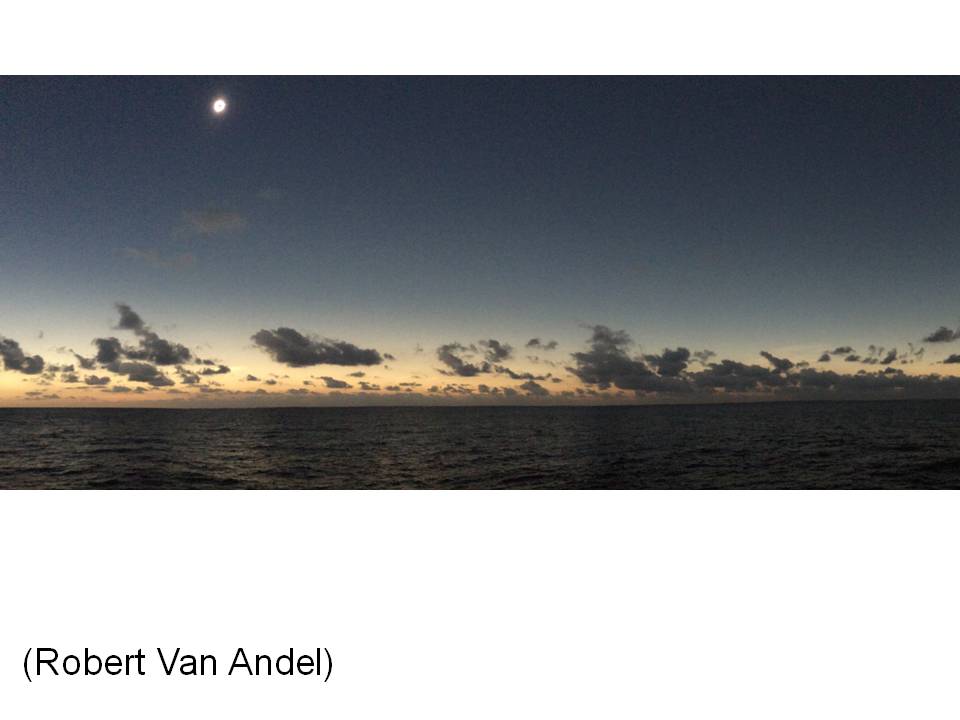 360 degree panorama of the horizon at totality during the March 9, 2016 eclipse at sea, with the eclipsed sun at about 44 degrees azimuth.
360 degree panorama of the horizon at totality during the March 9, 2016 eclipse at sea, with the eclipsed sun at about 44 degrees azimuth. -
I will provide here just a taste of important observations, events, poetry and legends found notable by my good friend and professional astronomer, Dr. Thomas Hockey, and I would like you to document your own culture or country's legends about eclipses in our journal for posterity.
"So out of the ordinary are eclipses that they have long been considered omens, for good or ill. Venerated or feared, they rarely have been ignored. Entire books have been written on humankind’s reactions to eclipses.
It is impossible to say what people first thought of eclipses. That report is lost to prehistory. However, we do know that homo sapiens have a long history with eclipses. The circumstances of 13,200 lunar and solar eclipses all over the globe have been calculated, just between the years 1207 BCE and 2161. We note that the Chinese were writing about something that sounds like the corona of the Sun, only seen during eclipses, as early as 1300 BCE.
Too, there is the famous story from around this time of two court astronomers, Hi and Ho, who were supposedly executed for failing to predict an eclipse--a much harder feat than observing one. This tale is, though, almost certainly apocryphal.
Still, as late as 840, a Chinese emperor died of fright during an eclipse. This is understandable in view of the Chinese myth that an eclipse occurs when a dog devours the Moon. As recently as 1948, an election was postponed in South Korea on account of an eclipse.
The Bible may record an ancient eclipse: “And on that day, says the Lord God, I will make the Sun go down at noon, and darken the Earth in broad daylight“ (Amos 8:9). Historians speculate that this passage is in reference to the eclipse of 15 June 763 BCE, which was total in Old Testament lands.
Farther west, we have this poem by Archilochus:
“Nothing there is beyond hope,
Nothing that can be sworn impossible,
Nothing wonderful,
Since Zeus,
Father of the Olympians,
Made night from midday,
Hiding the light of the shining sun,
And sore fear came upon men”
Archilochus lived during the Seventh Century BCE. A total eclipse of the Sun was visible from Greece on 6 April 648 BCE.
The historian Herodotus claims that, during a war between the Medes and Lydians, the great scientist Thales predicted an eclipse. (This seems unlikely; perhaps he warned of the possibility of an eclipse in the manner of the Mesopotamians?) Anyway, both sides wanted peace, and this was as good an excuse as any to call off the war. The story can be associated with the eclipse of 28 May 585 BCE.
Helicon of Cyzicus’s supposed prediction of a 12 May 361 BCE solar eclipse, like Thales’s, also can be attributed to a misunderstanding. It is easy to believe that stories of a famous scholar observing an eclipse evolved into stories of his predicting an eclipse.
Filled with more verisimilitude, I think, insofar as it does not involve a prediction, is the story of the lunar eclipse of 27 August 413 BCE. It, too, took place during a war--this time between Athens and Syracuse. The Athenian commander viewed the eclipse as a bad omen. He retired from the battlefield for a full month, thereby giving Syracuse time to regroup. Syracuse won.
An exciting modern discovery in archaeology is a set of metal gears and dials remarkably preserved in a two-millenia-old Greek shipwreck. It is named the Antikythera Mechanism (after a nearby Mediterranean island). As far as we now know, there was nothing else like it built for a thousand years. The Antikythera Mechanism seems to be a sophisticated, mechanical calendar. New analysis techniques reveal what looks like a saros eclipse-prediction dial.[1] This one-of-a-kind artifact still is being studied.
http://antikythera-mechanism.gr/
While the Antikythera Mechanism sat on the bottom of the sea, time floated by. The cause for eclipses became known. Moreover, Aristotle (384 BCE – 322 BCE) pointed out that, because the Earth always produces a round shadow on the Moon, the Earth must be a sphere.
However, that did not mean that everybody knew what was going on. Roman citizens still might be heard making a great clamor during a lunar eclipse, the purpose of which was to frighten away the great wolf that was eating the Moon.[2]
Roger of Wendover (died: 1236) chronicles the early-day eclipse of 14 May 1230: He tells of the sky becoming so dark that laborers, who had commenced their morning’s work, returned to their beds to sleep--only to restart the day hours later, after the eclipse had ended.
The nature of the corona was still a subject of speculation. It had been documented in print since the Tenth Century, but what exactly was it? (The word itself was not coined until 1803.) In the Seventeenth Century, Johannes Kepler (1571-1630; arguably the first modern astronomer) correctly concluded that the corona was actually part of the Sun, and not, say, of the Moon nor was an optical illusion produced by an eclipse.
Eventually, it became possible to predict eclipses accurately. (In the Western Hemisphere, the Maya probably could crudely foretell eclipses by the Third or Fourth Century.) In 1504, Christopher Columbus was marooned in Jamaica, awaiting resupply. He told the natives that if they did not provide him and his crew with food in the meantime, he would take away the Moon. Columbus was able to demonstrate the power of his threat since he knew that a lunar eclipse was to occur on 29 February, and he timed his pronouncement accordingly. The ruse worked. This was one of Columbus’s more “pleasant” interactions with the New World natives.
Skipping forward to more recent times, eclipses were standard observing fare for observational astronomers, who wished to keep track of the exact location of the Moon. The coordinates of the Moon were of practical value to mariners, who used its position on the Celestial Sphere to determine longitude before the advent of reliable sea clocks. Timing a total eclipse allowed placing the Moon precisely at the exact location of the Sun.
A lunar eclipse was of even more direct use: Because such an eclipse is a simultaneous event over large areas of the Earth, comparing the time of its occurrence to that printed in an almanac, written for a known location, allowed calculation of the time difference, and hence longitudinal difference, between your location and the almanac’s.
Legends involve theories ranging from the benign and romantic (the sun and moon as lovers, kissing behind the veil of darkness created during the eclipse) to the downright frightening (dragons, wolves or evil gods devouring the sun that must be scared away or appeased by banging on pots and pans or by making sacrifices). Of course, whatever you do to make the sun come back ALWAYS works in no more than 7 minutes, the maximum length of an eclipse, thus perpetuating the need to do whatever it is you did the last time. So, go ahead, have fun with it, do what your culture says to do, bang on some pots and pans, or create your own legend.
[1] Freeth, Tony; Jones, Alexander; Steele, John M.; and Bitsakis, Yanis. “Calendars with Olympiad Display and Eclipse Prediction on the Antikytherea Mechanism.” Nature. 454, p. 614. 2008.
[2] Pásztor, Emília. “Some Remarks on the Moon Cult of Teutonic Tribes.” In Ruggles, Clive (Editor). Archaeoastronomy in the 1990s. Loughborough (UK): Group D Publications, Ltd. 1993."
End of Prof. Thomas Hockey's paper.
Legends:
The one thing I urge you NOT to do is avoid looking at the eclipse completely because of unscientific beliefs in some cultures that predict bad luck, pregnancy, blindness, or other such events will occur for those who look at or are outdoors during an eclipse. No doubt all these things happened to people who looked at eclipses in the past, but they also happened to people who didn't look at eclipses. There is no scientific correlation between personal issues and eclipses, and the total solar eclipse is, in my opinion, nature's most magnificent spectacle, and very well understood and explained by modern science. Wonder at it, feel emotional, see the earth's place in the solar system like you never will at any other time, and most of all, enjoy it!
-
What would a total solar eclipse on Earth look like if I were in space?
NASA images and stories: https://www.nasa.gov/topics/solarsystem/features/eclipse/EclipseImg_080527_BajaEclipse.html
Eclipse from high altitude balloon:
Quick video from the ISS:
Has anyone ever seen the Earth eclipse the Sun from space?
Of course, when the Earth passes between the Sun and the space stations or capsules in orbit, the astronauts could say that the Earth is eclipsing the Sun from their point of view. Most of them call it passing into the shadow of the Earth, and they experience it as "night". That is because the Earth appears to be so big from low Earth orbit, only a few hundred miles above the surface, that it completely blocks the light from the sun; none of the Sun's atmosphere or corona is visible to the naked eye.
However, Pete Conrad, Dick Gordon and Alan Bean, the Apollo 12 astronauts, captured the Earth passing in front of the sun on their way back from the Moon in November 1969, using a 16mm motion picture camera. They were far enough away from the Earth to see the full Earth's disk in one frame. Here is one of the images from that eclipse:
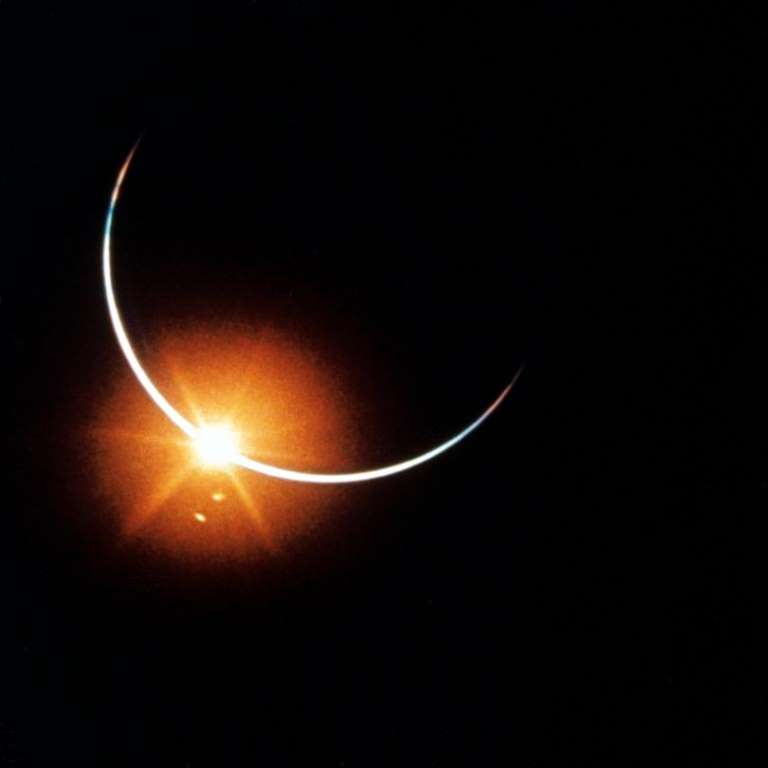
Notice the blue glow at the terminators of the eclipse, something you'll never see when the Moon eclipses the Sun.
Do you think that is the ocean or the atmosphere of the Earth? Why?
Would the astronauts have been able to see the corona of the Sun once it was covered by the Earth? Why?
Do other planets in our solar system have moons that cause total eclipses that can be seen on the surface of those planets?
Yes, many of the outer planets experience total eclipses at the planet's "surface", but you would not be able to see just the corona of the sun from any other planet. Why do you think that is?
Please journal your answers to these questions below.
-
-
View Receive a grade
On August 21, 2017, there is an eclipse crossing the USA. What are some of the things you learned about that will happen?
-
